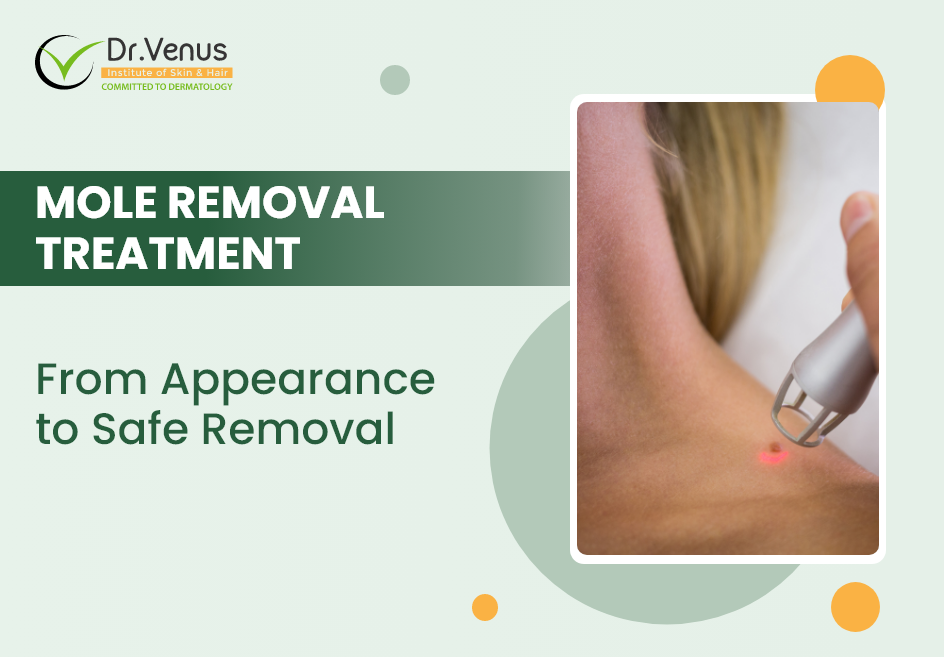Moles, often described as clusters of skin cells or dark spots, can appear anywhere on the body. Most people develop moles by the age of 20, with the average person having around 30 to 40 moles. While moles are common and usually benign, it’s essential to pay attention to changes, as some may indicate health concerns.
Understanding the Causes of Moles:
Genetics play a role in mole development, with some families having a higher predisposition to certain types of moles. Additionally, sun exposure can lead to the appearance of atypical or dysplastic moles, potentially increasing the risk of skin cancer.
Are New Moles a Cause for Concern?
While most moles are harmless, new or changing moles can be a sign of skin cancer, especially if there’s a family history of melanoma.
Using the ABCDEs to identify potentially problematic moles.
Asymmetry – unequal dimensions and forms.
Border irregularity – rough, uneven, or jagged border.
Colour variation – may be a mixture of colours.
Diameter – larger than a pencil eraser.
Evolving characteristics – variations in size, shape, and colour over time.
How to Determine If a Mole Is Cancerous:
Consulting the best dermatologist is crucial to assess mole abnormalities. A biopsy, where a tissue sample is examined, is often performed to confirm if a mole is cancerous. If positive results are obtained, the entire mole and surrounding areas may be removed to minimize cancerous cells.
Various Methods of Mole Removal:
Mole removal can be done through different methods:
Laser Mole Removal: Using bursts of light to absorb and destroy mole tissue, suitable for hard-to-reach or sensitive areas.
Punch Removal: Involves using a punch tool to cut through all skin layers.
Shave Excision: Utilizes a razor or electrode device to remove the mole.
Surgical Excision: Involves cutting off the mole and subcutaneous fat layer, followed by stitching the incision.
Freezing: Liquid nitrogen is used to freeze off non-cancerous moles on the skin’s surface.
Preparing for Mole Removal:
Before the procedure, a consultation is crucial to discuss goals and understand post-removal expectations. Factors such as scarring and aftercare vary based on the chosen removal method.
What to Expect After Mole Removal: Risks and Scarring:
While rare, infection and bleeding are potential risks post-removal. Following proper wound care instructions minimizes these risks. Scarring is a normal part of the healing process, but abnormal scarring types like hypertrophic or keloid may require additional treatment.
Recovery Time and Aftercare:
Healing times vary, and proper aftercare is essential for optimal recovery. Younger patients often heal faster, and most mole removal scars take two to three weeks to heal fully.
Can You Remove a Mole Yourself?
Attempting self-removal is strongly discouraged due to the risk of infection, scarring, and potential emergencies. Professional assistance ensures a safer and more effective outcome.
Book a Consultation for a Safer Approach:
For those considering mole removal treatment, consulting with a qualified dermatologist ensures a safe and normal cosmetic procedure. Addressing questions and concerns about the before-and-after effects of mole removal treatment and skin care is essential for a confident and informed decision. At Dr. Venus skin and hair clinic, our priority is guiding patients to the right treatment option for their skin condition. Don’t hesitate to book a consultation for personalized assistance.
